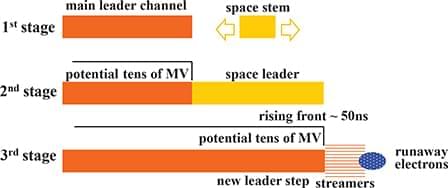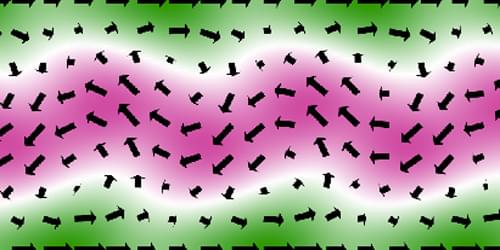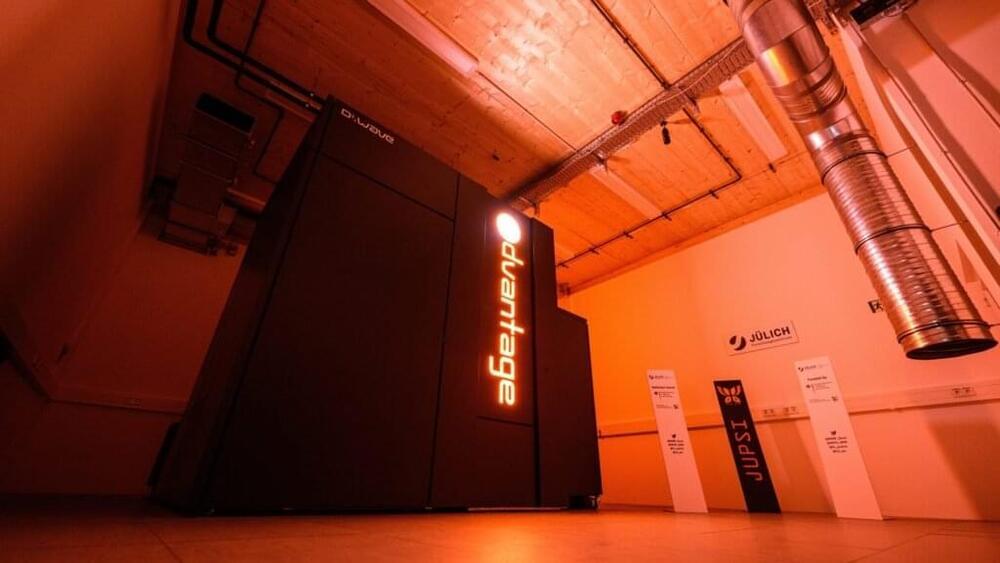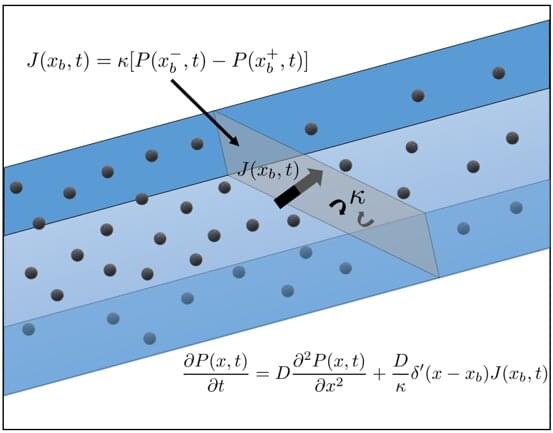These unnecessary experiments can cause another pandemic.
CRISPR has been used to rearrange the chromosomes of lab mice, a world’s first in mammals and a breakthrough in bioengineering.


Lightning can produce multiband radio waves and high-energy radiations. Some of them are associated with the formation of lightning leaders. However, their generation mechanisms are not fully understood yet. Based on the understanding of thermal runaway electrons generated at the leader tip, we propose transition radiation of these runaway electrons as an alternative mechanism for producing very-high-frequency radio signals. Transition radiations are induced when runaway electrons cross the interfaces between lightning coronas and the air. By the use of estimated parameters of electron beams emerging from the leader tips, we calculate their coherent transition radiation and find that the energy spectra and radiation powers are consistent with some detection results from stepped leaders and even narrow bipolar events. Moreover, our model also predicts strong THz radiation during the stepped-leader formation. As a standard diagnosis technique of electron bunches, the proposed coherent transition radiation here may be able to reconstruct the actual properties of electron beams in the leader tips, which remains an open question.


“So a quantum key distribution consists of two things: No. 1, got to have a quantum random number generator, and that’s one of the things that QNu Labs makes,” he said. “The second thing that you need is the receivers in which those two devices connect and be used to convey encrypted messages in this fashion.”
In military use, quantum key distribution would work best in point to point communication — that is, communicating from one person to another. Creating a “true network” that’s able to send the same encrypted message to multiple receivers at once is challenging because the encrypted bit that’s carrying the message eventually begins to lose its coherence and “drops away,” Herman said.
“In the military, where you’re sending extremely sensitive classified data from one office to the next, you want to make sure that no one’s going to be able to break into and decrypt that,” he said. “Well, [quantum key distribution] is definitely a way in which to carry that out.”

On the other hand, ever since Moscow’s invasion of Ukraine in February, Germany has been doing all it can to become independent of gas imports from Russia. The country’s storage facilities are filling up and natural gas consumption, particularly in industry, has dropped significantly. So does that mean that the suspension of deliveries via Nord Stream 1 isn’t such a big deal after all? We have compiled answers to the most important questions.
How badly will German natural gas supplies be affected by the suspension of Nord Stream 1 operations?
The discontinuation of gas deliveries from Russia is certainly a setback for German efforts to fill storage facilities to maximum capacity before the arrival of winter. And drives prices even higher. For the moment, though, no industrial operation or household must be concerned about a sudden suspension of gas supplies. Natural gas demand is rather low for the time being, and plenty of the fuel is being delivered from other countries, though at a much higher price.

A groundbreaking mathematical equation that could transform medical procedures, natural gas extraction, and plastic packaging production in the future has been discovered.
The new equation, developed by scientists at the University of Bristol, indicates that diffusive movement through permeable material can be modeled exactly for the very first time. It comes a century after world-leading physicists Albert Einstein and Marian von Smoluchowski derived the first diffusion equation, and marks important progress in representing motion for a wide range of entities from microscopic particles and natural organisms to man-made devices.
Until now, scientists looking at particle motion through porous materials, such as biological tissues, polymers, various rocks and sponges have had to rely on approximations or incomplete perspectives.

Researchers at the U.S. Department of Energy’s (DOE’s) National Renewable Energy Laboratory (NREL) have made a technological breakthrough and constructed a perovskite solar cell with the dual benefits of being both highly efficient and highly stable.
The work was done in collaboration with scientists from the University of Toledo, the University of Colorado-Boulder, and the University of California-San Diego.
A unique architectural structure enabled the researchers to record a certified stabilized efficiency of 24% under 1-sun illumination, making it the highest reported of its kind. The highly efficient cell also retained 87% of its original efficiency after 2,400 hours of operation at 55 degrees Celsius.

Security researchers have discovered that Minecraft is the most heavily abused game title by cybercriminals, who use it to lure unsuspecting players into installing malware.
Based on stats collected by the security firm between July 2021 and July 2022, Minecraft-related files accounted for roughly 25% of malicious files spreading via game brand abuse, followed by FIFA (11%), Roblox (9.5%), Far Cry (9.4%), and Call of Duty (9%).
Other game titles with notable percentages of abuse during this period are Need for Speed, Grand Theft Auto, Valorant, The Sims, and GS: GO.

A new stealthy Linux malware known as Shikitega has been discovered infecting computers and IoT devices with additional payloads.
The malware exploits vulnerabilities to elevate its privileges, adds persistence on the host via crontab, and eventually launches a cryptocurrency miner on infected devices.
Shikitega is quite stealthy, managing to evade anti-virus detection using a polymorphic encoder that makes static, signature-based detection impossible.

A reverse-proxy Phishing-as-a-Service (PaaS) platform called EvilProxy has emerged, promising to steal authentication tokens to bypass multi-factor authentication (MFA) on Apple, Google, Facebook, Microsoft, Twitter, GitHub, GoDaddy, and even PyPI.
The service enables low-skill threat actors who don’t know how to set up reverse proxies to steal online accounts that are otherwise well-protected.
Reverse proxies are servers that sit between the targeted victim and a legitimate authentication endpoint, such as a company’s login form. When the victim connects to a phishing page, the reverse proxy displays the legitimate login form, forwards requests, and returns responses from the company’s website.